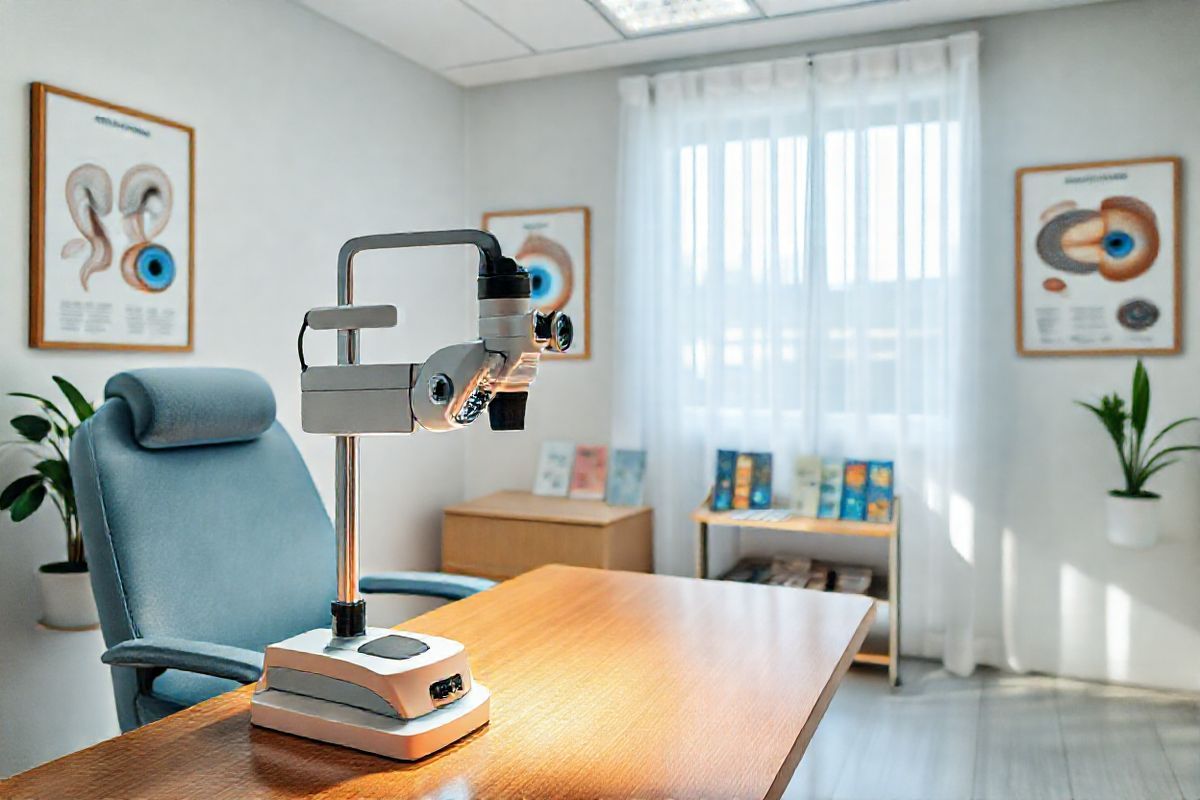Table of Contents
Exploring the Different Types of Cataracts

Cataracts are primarily defined by the location and nature of the opacification in the lens of the eye. The most common type is age-related cataracts, which develop as part of the natural aging process. However, there are several other types of cataracts that can occur due to various factors:
-
Nuclear Cataracts: These form in the central part of the lens, leading to gradual vision loss and difficulty focusing on near objects. They are most commonly associated with aging.
-
Cortical Cataracts: These develop from the outer layer of the lens and typically produce a clouding that progresses inward. Individuals with these cataracts may experience issues with glare and contrast sensitivity.
-
Subcapsular Cataracts: Located at the back of the lens, subcapsular cataracts can develop quickly and may be associated with conditions like diabetes or prolonged use of steroid medications.
-
Congenital Cataracts: Present at birth or developing during infancy, these cataracts can be hereditary or associated with maternal health conditions during pregnancy.
-
Traumatic Cataracts: Resulting from eye injuries, these cataracts can occur immediately or develop years later. Treatment often involves surgical intervention.
Regardless of the type, the only effective treatment for cataracts is surgical removal of the cloudy lens, which is replaced with an artificial intraocular lens (IOL) (National Eye Institute, 2023).
Unveiling the Causes of Cataracts: What You Need to Know
The primary cause of cataracts is age-related changes in the lens of the eye. As individuals age, the proteins that make up the lens can clump together, leading to cloudiness. Other factors that contribute to the development of cataracts include:
- Genetic Factors: A family history of cataracts can increase the likelihood of developing them.
- Medical Conditions: Diseases such as diabetes, obesity, and hypertension can elevate the risk of cataracts.
- Environmental Factors: Prolonged exposure to UV radiation from the sun can damage the lens, leading to cataract formation.
- Lifestyle Choices: Smoking and excessive alcohol consumption are significant risk factors, as they can accelerate lens opacification.
- Medications: Long-term use of corticosteroids and certain other medications can contribute to cataract development (National Eye Institute, 2023).
TablCommon Causes of Cataracts
| Cause | Description |
|---|---|
| Age-related | Natural aging process causing protein clumping |
| Genetic predisposition | Family history of cataracts |
| Medical conditions | Diabetes and obesity increase risk |
| Environmental exposure | UV radiation damage to the lens |
| Lifestyle factors | Smoking and excessive alcohol use |
| Medications | Long-term corticosteroid use |
Identifying Risk Factors for Cataracts: Are You at Risk?
Understanding the risk factors for cataracts can help individuals take proactive steps towards prevention. The risk of developing cataracts increases with age, particularly for those over 60. Additional risk factors include:
- Chronic Diseases: Conditions like diabetes can significantly increase the risk of cataracts due to metabolic changes affecting lens clarity.
- Smoking: Studies show that smokers are more likely to develop cataracts compared to non-smokers.
- Alcohol Use: Excessive drinking is associated with an increased risk of various eye conditions, including cataracts.
- Eye Injuries or Surgeries: Previous injuries or surgeries can predispose individuals to cataracts.
- Sun Exposure: Extended periods in the sun without proper eye protection can damage the eyes and lead to cataract formation.
- Medications: Long-term steroid use is linked to cataracts, necessitating regular eye examinations for those taking such medications (National Eye Institute, 2023).
TablRisk Factors for Cataracts
| Risk Factor | Impact on Cataract Development |
|---|---|
| Age | Increased risk after age 60 |
| Chronic diseases | Conditions like diabetes elevate risk |
| Smoking | Higher likelihood of cataract formation |
| Alcohol use | Excessive consumption linked to eye conditions |
| Eye injuries/surgeries | Previous trauma increases risk |
| Sun exposure | UV rays damage the lens |
| Medications | Long-term steroid use increases risk |
A Comprehensive Guide to Cataract Surgery: What to Expect
Cataract surgery is a relatively straightforward and effective procedure aimed at restoring vision. It is one of the most commonly performed surgical procedures worldwide, with a high success rate (Cataract Surgery, 2023).
How the Surgery Is Performed
Cataract surgery typically involves the following steps:
-
Pre-operative Preparations: Prior to surgery, patients undergo a comprehensive eye examination to determine the appropriate type of IOL. Patients may also be given eye drops to prevent infection.
-
Surgical Procedure: The surgery is usually performed on an outpatient basis, meaning patients can return home the same day. A local anesthetic is applied to numb the eye, and patients are typically awake but relaxed during the procedure. The surgeon makes a small incision in the cornea and uses ultrasound waves to break up the cloudy lens (phacoemulsification) or removes it in one piece (extracapsular extraction) (Cataract Surgery, 2023).
-
Insertion of Intraocular Lens (IOL): After removing the cataract, a clear artificial lens (IOL) is inserted to restore vision. The incision is usually self-sealing, meaning stitches are often not required.
-
Post-operative Care: Patients are monitored for a short period before being discharged with specific instructions for care and follow-up appointments (Cataract Surgery, 2023).
Types of Cataract Surgery
The two main types of cataract surgery are:
-
Phacoemulsification: This is the most common method, involving small incisions and ultrasound waves to break up the lens.
-
Extracapsular Surgery: This technique uses a larger incision to remove the lens in one piece.
Post-operative Expectations
After surgery, patients may experience blurred vision initially, but many notice an improvement in their vision soon after the procedure. However, full recovery can take several weeks, during which it is essential to follow the doctor’s instructions regarding eye care and follow-up visits (Cataract Surgery, 2023).
Recovery and Aftercare: Steps to Ensure a Smooth Cataract Surgery Experience

Recovery from cataract surgery is generally straightforward, but it is essential to adhere to specific guidelines to ensure a smooth healing process:
-
Follow-Up Appointments: Regular follow-up visits with the ophthalmologist are crucial to monitor healing and assess vision improvement.
-
Use of Eye Drops: Patients are often prescribed anti-inflammatory and antibiotic eye drops to prevent infection and manage inflammation. It’s important to use these drops as directed.
-
Avoiding Strain: Patients should refrain from heavy lifting, bending over, or engaging in strenuous activities for a few weeks to prevent complications.
-
Protection from Light: Wearing sunglasses outdoors can help shield the eyes from bright light and UV rays, which can be uncomfortable after surgery.
-
Monitoring Symptoms: Any sudden changes in vision, increased redness, pain, or discharge should prompt immediate consultation with an eye doctor (Cataract Surgery, 2023).
TablPost-Operative Care Tips
| Care Tip | Description |
|---|---|
| Follow-up appointments | Essential for monitoring recovery |
| Use of prescribed eye drops | Prevents infection and reduces inflammation |
| Avoiding physical strain | Prevents complications during healing |
| Protecting eyes from light | Reduces discomfort from bright glare |
| Monitoring symptoms | Immediate attention for any concerning symptoms |
Frequently Asked Questions (FAQ)
1. How long does cataract surgery take?
Cataract surgery typically lasts between 10 to 20 minutes, depending on the complexity of the cataract.
2. Will I be awake during the surgery?
Yes, patients are usually awake but sedated during the procedure, so they do not feel any pain.
3. How soon will I notice improvement in my vision?
Many patients notice improvements in vision within a few hours post-surgery, although full recovery can take weeks.
4. Are there any risks associated with cataract surgery?
While cataract surgery is generally very safe, potential risks include infection, bleeding, and retinal detachment.
5. How much does cataract surgery cost?
Costs can vary widely depending on insurance coverage and the type of IOL used. Medicare and many private insurers cover the surgery under specific conditions (Cataract Surgery, 2023).
References
- National Eye Institute. (2023). What are cataracts? Retrieved from https://www.nei.nih.gov/learn-about-eye-health/eye-conditions-and-diseases/cataracts
- Cataract Surgery. (2023). Johns Hopkins Medicine. Retrieved from https://www.hopkinsmedicine.org/health/treatment-tests-and-therapies/cataract-surgery
- Cataract Surgery: Risks, Recovery, Costs. (2023). American Academy of Ophthalmology. Retrieved from https://www.aao.org/eye-health/diseases/what-is-cataract-surgery
- Cataract removal: MedlinePlus Medical Encyclopedia. (2023). Retrieved from https://medlineplus.gov/ency/article/002957.htm











